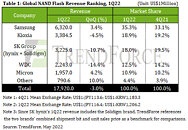
Chinese SMIC Ships 7 nm Chips, Reportedly Copied TSMC's Design
The Chinese technology giant, SMIC, has managed to advance its semiconductor manufacturing technology and shipped the first 7 nm silicon manufactured on China's soil. According to analyst firm TechInsights, who examined the 7 nm Bitcoin mining SoC made for MinerVa firm, there are doubts that SMIC 7 nm process is somewhat similar to TSMC's 7 nm process. Despite having no access to advanced semiconductor manufacturing tools, and US restrictions placed around it, SMIC has managed to produce what resembles an almost perfect 7 nm node. This could lead to a true 7 nm logic and memory bitcells sometimes in the future, as the node advances in SMIC's labs.
Having done an in-depth die analysis, the TechInsights report indicates that TSMC, Intel, and Samsung have a more advanced 7 nm node and are two nodes ahead of the Chinese SMIC. The results are not great regarding the economics and yield of this SMIC 7 nm process. While we have no specific data, the report indicates that the actual working chips made with older DUV tools are not perfect. This is not a problem for the Chinese market as it seeks independence from Western companies and technology. However, introducing a China-made 7 nm chip is more critical as it shows that the country can manufacture advanced nodes with restrictions and sanctions in place. The MinerVa SoC die and the PCB that houses those chips are pictured below.
Having done an in-depth die analysis, the TechInsights report indicates that TSMC, Intel, and Samsung have a more advanced 7 nm node and are two nodes ahead of the Chinese SMIC. The results are not great regarding the economics and yield of this SMIC 7 nm process. While we have no specific data, the report indicates that the actual working chips made with older DUV tools are not perfect. This is not a problem for the Chinese market as it seeks independence from Western companies and technology. However, introducing a China-made 7 nm chip is more critical as it shows that the country can manufacture advanced nodes with restrictions and sanctions in place. The MinerVa SoC die and the PCB that houses those chips are pictured below.















































